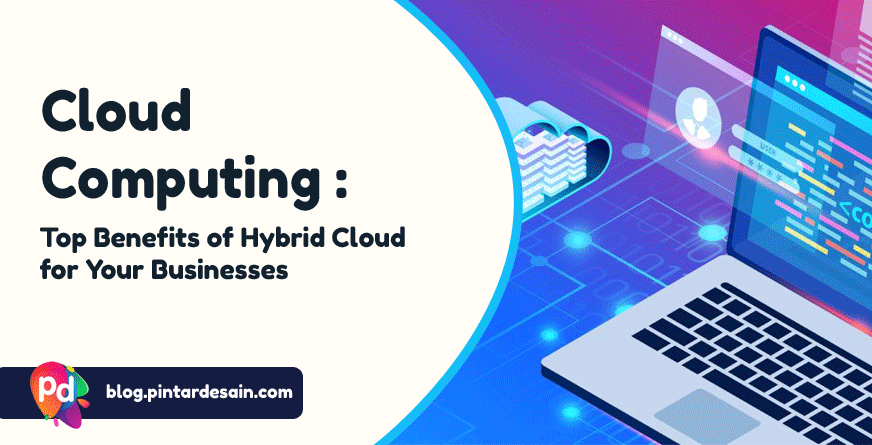In today’s digital age, businesses are increasingly turning to cloud computing to store and manage their data. However, not all data is created equal, and some may require greater security measures or faster access times. To address this, businesses are adopting a hybrid cloud architecture, which combines the benefits of public and private clouds. In this article, we will explore what a hybrid cloud architecture is and why it is becoming increasingly popular.
A hybrid cloud architecture is a computing environment that uses a combination of public and private clouds. Public clouds are owned and managed by third-party providers, while private clouds are owned and managed by the organization itself. In a hybrid cloud environment, businesses can store sensitive or critical data in a private cloud and use a public cloud for less sensitive data or applications that require greater scalability or processing power.

The two clouds are connected by a secure network, which enables data and applications to be moved seamlessly between them. This allows businesses to take advantage of the cost savings, scalability, and agility offered by public clouds while keeping their sensitive data secure in a private cloud.
Hybrid cloud architecture is becoming increasingly popular because it offers several benefits to businesses. One of the primary benefits is increased flexibility. Businesses can scale their infrastructure up or down to meet changing demands while maintaining control over their sensitive data. They can also take advantage of the cost savings and agility offered by public clouds, while still retaining control over their data in a private cloud.
Another key benefit of hybrid cloud architecture is improved security. By keeping sensitive data in a private cloud, businesses can ensure that it is protected by their own security policies and procedures. Public clouds, on the other hand, typically offer robust security features that can be leveraged for less sensitive data.
Hybrid cloud architecture also offers improved disaster recovery capabilities. By keeping critical data in a private cloud, businesses can ensure that it is backed up and recoverable in the event of a disaster. Public clouds, which typically have multiple data centers in different geographic locations, can provide additional redundancy and ensure that applications remain available even in the event of a localized outage.
However, managing a hybrid cloud architecture can be complex. Businesses need to ensure that their private and public clouds are properly integrated, and that data and applications are moved securely between them. They also need to ensure that their security policies and procedures are enforced consistently across both environments.
In conclusion, a hybrid cloud architecture is an essential tool for modern businesses. It allows organizations to take advantage of the benefits of public clouds while maintaining control over their sensitive data. By leveraging the flexibility, security, and disaster recovery capabilities of a hybrid cloud architecture, businesses can ensure that their IT infrastructure is agile, scalable, and resilient. However, managing a hybrid cloud architecture requires careful planning and execution, and businesses need to ensure that their security policies and procedures are enforced consistently across both their private and public clouds.
Hybrid Cloud Benefits
- Scalability: Hybrid cloud allows organizations to scale up or down their computing resources as needed. They can easily shift workloads between private and public clouds to match changing business requirements.
- Cost savings: Hybrid cloud allows organizations to optimize their IT spend by balancing the use of cost-effective public cloud services with the security and control of private clouds.
- Security: Hybrid cloud allows organizations to maintain control over sensitive data by keeping it on-premises or in a private cloud while still leveraging the benefits of public cloud services.
- Flexibility: Hybrid cloud allows organizations to select the right cloud for each workload. They can choose public cloud for non-sensitive data, while private cloud can be used for mission-critical applications.
- Disaster recovery: Hybrid cloud allows organizations to build a robust disaster recovery plan by replicating critical data and applications between private and public clouds.
- Compliance: Hybrid cloud can help organizations meet regulatory compliance requirements by allowing them to keep sensitive data on-premises or in a private cloud while still using public cloud services for less sensitive data.
- Innovation: Hybrid cloud enables organizations to innovate quickly by leveraging public cloud services that offer cutting-edge technologies, such as AI and machine learning, while still maintaining control over their critical applications and data.
Hybrid Cloud Challenges
- Complexity: Hybrid cloud environments can be complex to set up and manage, as they require integration between different cloud platforms and on-premises infrastructure.
- Security: Hybrid cloud environments can increase security risks if not managed properly, as they involve multiple cloud platforms and data transfer between them.
- Data management: Hybrid cloud environments require efficient data management practices to ensure data consistency, availability, and security across all platforms.
- Cost management: Hybrid cloud environments can be expensive to set up and manage, as they require expertise in multiple cloud platforms and IT infrastructure.
- Integration: Hybrid cloud environments require seamless integration between different cloud platforms and on-premises infrastructure to ensure efficient data transfer and application performance.
- Governance: Hybrid cloud environments require robust governance practices to ensure compliance with regulatory requirements and security policies across all platforms.
- Performance: Hybrid cloud environments can suffer from performance issues due to data transfer between different cloud platforms and latency issues. These issues can affect application performance and user experience.